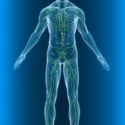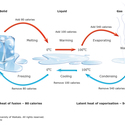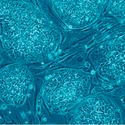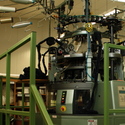Position: Emeritus Professor of Nanotechnology1, School of Food and Advanced Technology, Massey University
Field: Nanotechnology
Richard Haverkamp was Professor of Nanotechnology in the School of Food and Advanced Technology at Massey University, Palmerston North. The focus of his research is on nanotechnology applied to soft and hard materials
Becoming a nanotechnologist has involved a fascinating journey for Richard. At school, he was interested in physics, mathematics and chemistry, but he had no particular career goal in mind. He studied chemistry at university, but at this stage there was no thought of doing nanoscience2 – he’d never heard of it. Richard went on to work in industry as a chemical engineer3.
Career highlights have been the interaction with scientists and engineers around the world, the development of a new understanding of nature, the invention of new devices and the creation of new intellectual models to describe and predict real processes.
After about ten years, Richard returned to university and obtained a PhD4. He realised that a career in university was just the thing for him. It was creative and stimulating, with a huge amount of independence – a bit like being your own boss. Over time, Richard found himself spending more and more time studying single molecules5 and nanoscale6 particles. Unintentionally, he had morphed from a chemical engineer into a nanotechnologist.
When you meet Richard, you can tell that he finds his research and teaching work fun. “I love what I do, it’s much better than having a job,” he quips. Research and teaching are obviously valuable contributions to science, but looking at how things work at the nanoscale has also helped make the world a more interesting place for Richard.
Richard was also a researcher for the Science for Technological Innovation (SfTI) National Science Challenge. Alongside other researchers Richard lookied into the potential of using animal collagen7 as a support for damaged structures within the human body while they’re under natural repair.
Upon his retirement in 2024 he was awarded the title of Professor Emeritus. Hedoes though intend to continue his collaborations with Massey through supervising student research, training staff in the use of the atomic force8 microscopy, assisting Massey Ventures in commercialising a medical device he invented and further project collaborations within his network.
Related content
The articles Electrocatalysts for future fuels and Gold nanoparticles from plants detail the research by Richard and his team.
Useful links
Read this 2019 interview Five minutes with Richard Haverkamp on the Engineering New Zealand website.
Discover more about Richard's work for the Science for Technological Innovation National Science challenge.
This article is based on information current in 2008 and 2025.
- nanotechnology: Understanding and working with matter at the scale of atoms and molecules. 1 nanometre is a millionth of a millimetre.
- nanoscience: The study of atoms, molecules and objects whose size is on the nanometre scale (1–100 nanometres).
- chemical engineer: Someone who studies the processes and equipment needed for the commercial manufacture of chemicals.
- PhD: Abbreviation of Doctor of Philosophy – a degree normally obtained after a concentrated period of research. This is the highest level of degree that involves supervision by academic staff at a university.
- molecule: Two or more atoms bonded together. The molecule of an element has all its atoms the same. The molecule of a compound has two or more different atoms.
- nanoscale: Refers to dimensions below 100 nm. Also refers to the small size, often only a few nm, at which the properties of a substance are different to properties of bulk material.
- collagen: Any of various tough, fibrous proteins found in bone, cartilage, skin, and other connective tissue. Collagens have great strength and their job is to form strong insoluble fibres that connect cells. Collagen is converted into gelatin when it is boiled.
- force: A push or a pull that causes an object to change its shape, direction and/or motion.









